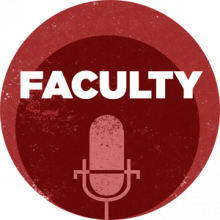By Sarah Geegan
A new hybrid course in the College of Arts and Sciences will bridge the gap between to seemingly unrelated areas: art and epidemics.
Using an interdisciplinary approach, the course will focus on five different diseases: alcoholism, tuberculosis, AIDS, cancer and the plague, through both scientific and humanities approaches. Students will explore opposite ways of conceptualizing, expressing and writing about this common theme. This 3-credit course will be available in the fall 2013 semester, and is open to all students majoring in the humanities or the sciences.
The course is titled, "UKC 310: Art and Epidemics."
Instructors Katherine Rogers-Carpenter and Rita Basuray structured the course to cover the science behind these diseases, how they spread and how they have been controlled or treated. Student will also explore the human face of disease by examining films, fiction and visual art produced in response to the same health crises. Students will synthesize their research in review papers that target scientific audiences, as well as composing fictional and reflective pieces designed for a humanities audience.
"Some of these diseases are really connected to specific literary periods," Rogers-Carpenter said. "So when tuberculosis was untreatable or hard to treat, there was a whole aesthetic developed around tuberculosis, and so there's poetry about it. There are blues songs like Jimmy Roger's who wrote about tuberculosis. There is a lot of drama about alcoholism, and of course there is a whole literature around AIDS."
Registered students will be divided into teams with at least three members. Using team based learning (TBL) principles and in-class group  activities, students will be able to choose topics in scientific areas and cultural artifacts linked to these topics to create group projects and presentations. This course will encourage sustained peer-to-peer interaction, as well as focused interaction with faculty. Since this course will include many group activities, students will have multiple opportunities to explore research topics in detail and discuss outcomes of their search.
activities, students will be able to choose topics in scientific areas and cultural artifacts linked to these topics to create group projects and presentations. This course will encourage sustained peer-to-peer interaction, as well as focused interaction with faculty. Since this course will include many group activities, students will have multiple opportunities to explore research topics in detail and discuss outcomes of their search.
Basuray said that she expects the uniqueness and the interdisciplinary nature of the course to attract a varied array of students with different interests.
"Courses like this allow me to learn as much from the students, which is wonderful," Basuray said.
Listen to a podcast, produced by the College of Arts and Sciences, in which Basuray and Rogers-Carpenter discuss the course below.
